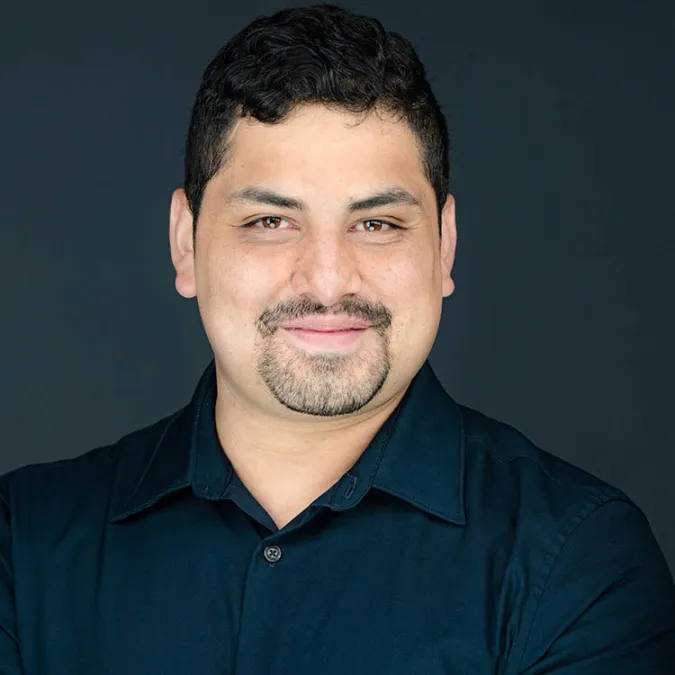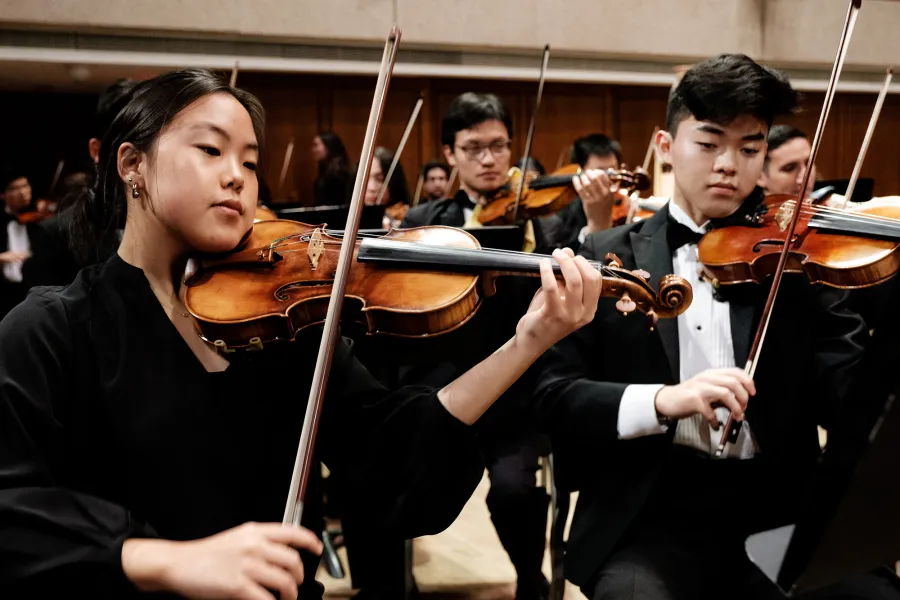Chris Tran, conductor
Matthew Pavon, conductor
This concert will last about 90 minutes with one intermission.
Please silence your electronic devices.
Photography, video, or recording of any part of this performance is prohibited
Program
Samuel Coleridge-Taylor
ed. Snyder
Symphonic Variations on an African Air, op.63
Chris Tran, conductor
intermission
Josef Suk
Pohádka (Fairy Tale), op. 16
O věrném milování Radúze a Mahuleny a jejich strastech
(About the Constant Love of Raduz and Mahulena and Their Trials)
Intermezzo: Hra na labutě a pávy
(Playing at Swans and Peacocks)
Intermezzo: Smuteční hudba
(Funeral Music)
Runy kletba a jak byla láskou zrušena
(Runa's Curse and How It was Broken by True Love)
Matthew Pavon, conductor
About the Program
Program notes by Mark Bilyeu
Samuel Coleridge-Taylor
Symphonic Variations on an African Air
Born August 15, 1875, Holborn
Died September 1, 1912, Croydon, United Kingdom
Composed 1905-1906
Premiered June 14, 1906, Philharmonic Society, Samuel Coleridge-Taylor, conductor
Duration 20 minutes
After working alongside Gustav Mahler and conducting the New York Philharmonic in 1910, the Black English composer Samuel Coleridge-Taylor was dubbed “the Black Mahler” by New York’s musical elite. The son of a Creole man from Sierra Leone and a white English woman, Coleridge-Taylor gained international prominence for his 1898 cantata setting of Longellow’s Hiawatha poems. While studying in London, he was introduced to the music of Antonin Dvořák, who at that time was promoting, disseminating — and many argue appropriating — the music he had experienced while in America. This motivated Coleridge-Taylor to delve deeply into American and African-American music. In 1905, he published a set of piano pieces entitled Tweny-Four Negro Melodies, and in the preface wrote “...what Brahms has done for the Hungarian folk-music, Dvořák for the Bohemian, and Grieg for the Norwegian, I have tried to do for these Negro Melodies.” It was at this same time, in 1905, that he began crafting “Symphonic Variations on an African Air,” which was based on the melody “I’m troubled in mind.” The work is in free variation form, which means they are un-numbered and (unlike a variation set by Mozart or Brahms) follow no strict pattern. Though many musicologists have tried to order and organize them, many are unable to even agree on how many variations exist. While a frustration for academics, it is a joy for us listeners: able to simply experience the music of a composer whose short life has inspired grief over what could have been, and gratitude for the music he gave us.
Josef Suk
Pohadka ,Op. 16
Born January 4, 1874, Křečovice, Czech Republic
Died May 29, 1935, Benešov, Czechoslovakia
Composed 1897- 1900
Premiered February 7, 1901, Czech Philharmonic Orchestra, Prague, Oskar Nedbal, conductor
Duration 30 minutes
In 1887, Josef Suk began writing incidental music for the drama Radúz and Mahulena by his contemporary, the writer Julius Zeyer. Suk’s emotional investment in the story about a prince and princess (and their love which triumphs over adversity) escalated quickly as he wrote, so that by the play’s opening night, there were overtures to every scene, intermezzos within the scenes, sung solos and choruses, and the final act contained was nearly all underscored with Suk’s music. It was a lot. The production did well, but Suk was a pragmatist and understood the likelihood of the play being mounted again in this scale was unlikely, so he set out to craft a purely instrumental suite from his score. What resulted was the four-movement Pohadka, or “Fairy Tale.” The first movement uses music from Acts 1 and 3 — you’ll be able to hear the princess’s theme in the solo violin. The second movement also pulls from the first act of the play, a polka dance and the song of the woodcutter. Suk contrasts the joy of young love with the funeral music of the prince’s father, the king, made clear with the ascending and descending tritones (a motive he would just a few years later in his Asrael Symphony, commemorating the deaths of his wife Otilka and her father: Antonin Dvořák). The final movement is taken from the play’s finale — where a spell is broken and the two lovers celebrate with the return of the princess’s theme music.
About the Artists
Chris Tran

Chris Tran is co-director of The University of Texas University Orchestra, graduate teaching assistant for the University of Texas Orchestras, and is currently pursuing a doctor of musical arts in orchestral conducting with Farkhad Khudyev at The University of Texas at Austin. Mr. Tran has been an invited conductor at several masterclasses and workshops in Boulder, Los Angeles, Eugene, St. Andrews (Scotland), as well as the Cabrillo Festival of Contemporary Music with Cristian Măcelaru, Thomas Sleeper, and Leonard Slatkin, and the International Conducting Workshop and Festival with the late Larry Rachleff and Donald Schleicher. He has also worked with conductors Neil Thomson, Jeff Grogan, and Sian Edwards. Mr. Tran earned a master of music in orchestral conducting from the University of Colorado Boulder with Gary Lewis, and a bachelor of music in music education from Southern Methodist University. His conducting mentors include Nicholas Carthy and Paul Phillips. He studied violin with Charles Wetherbee, former concertmaster of the Boulder Philharmonic, and Diane Kitzman, former principal violin of the Dallas Symphony.
Matthew Pavon

Matthew Pavon is a conductor and violist studying orchestral conducting under Farkhad Khudyev at The Butler School of Music. In his role as assistant instructor for university orchestras, Matthew is an active conductor and administrator for Symphony Orchestra. He also serves as Co-Director for University Orchestra. Matthew holds viola performance degrees from Evangel University (B.M. '19) and Missouri State University (M.M. '22). Guest conducting appearances have included concerts with the Austin Civic, Kansas City Civic, Missouri State University Symphony, Drury University, and Kansas City Youth Symphony, and Missouri Philharmonic Orchestras. As a violist, he was an active member of the Springfield Symphony Orchestra for seven years and a substitute violist for the Symphony of Northwest Arkansas. Matthew’s passion is connecting with people of all ages and backgrounds through music. He lives in Austin, TX, with his wife, Leianna, and their two mini-Australian Shepherds, Koda and Ellie.
University Orchestra
Violin I
Avelyn Lee, concertmaster
Chistian Dipert
Naomi Fokkens
Brandon Mendoza
Emily Tando
Felipe Benitez
Thomas Feng
Lauren Heyde
Angelica Sharma
Ursula Weissfield
Jessica Lin
Holden Tom
Sonya Shah
Joseph McPeek
Violin II
Kylie Hung
Rudhran Sathish
Jasmine Chou
Joaquin Alvarez
Cannon Bates
Peter Stone
Jailyn Barnuevo
Eric Liang
Ximena Cazares
Jacob Hason
Evan Le
Rachel Kim
Mohini Bhave
Jack Johnson
Page Tan
Qian Hu
Viola
Rachel Su
Amy Ning
Wonkuk Lee
Shota Sawada
Ash Roberts
Daniel Kim
Angela Zhang
Gauri Binup
Randy Guo
Edward Visaya
Jaela Barrera
Caroline Hughes
Audrey Sohn
Cello
James Tabanao
Rei Iwahara
Daniel Tepedino
Kaye Chen
Michael Chung
Anthony Hermez
Emile Meyrat
Allison Tseng
Drew Warninghoff
Aarya Patel
Kayva Gour-Gupta
Domenica Aburto de la Fuente
Irene Benavides-Perez
Kunal Manish
Bass
Dezhou Gao
Aravind Shandilya
Emily Layton
Brandon Chiu
Ryan Webster
Choe Mamitag
Flute
Namrata Boggaram
Camila Martinez
Pari Deshpande
Oboe
Noah Bihan
Kyra Ullman
Vibha Immedisetty
Clarinet
Jusun Chung
Brain Kim
David Leal
Bassoon
Owen Schaefer
Gavin Remo
Horn
Dhanush Jain
David Finecy
Uriel Reyes
Daniela Garcia
Trumpet
Harmon Byerly
Americo Zapata
Trombone
Landon Reimer
Konner Wetterstrom
Hudson Pedrotti
Tuba
Chancellor Joseph
Percussion
Aizen West
Michael Stephens
Philip Kaufinger
Harp
Kirsten Karamihan
Event Details
Free admission


